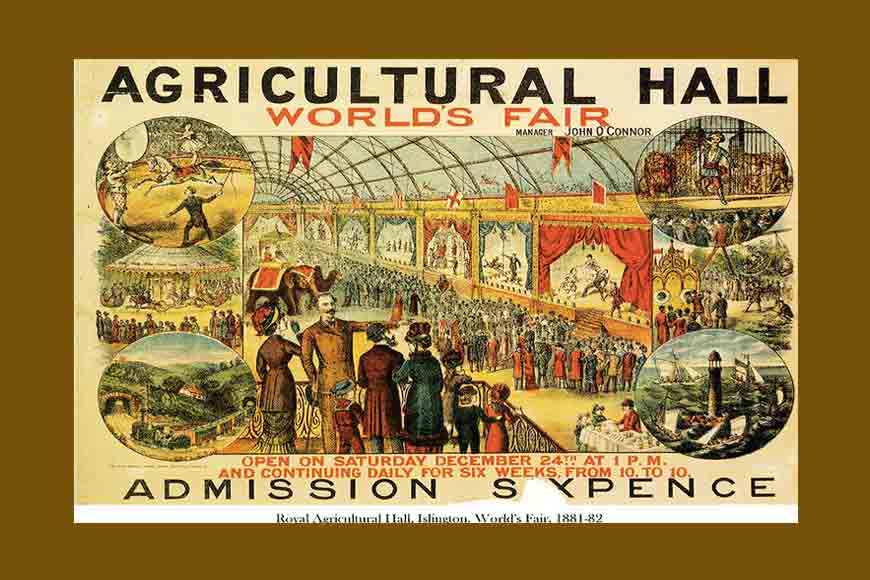Captain Suresh Biswas, the Bengali who became a Brazilian

“The grand Continental menagerie, which occupies the center of the Hall, and which is open to all, contains a really good collection of animals, birds and reptiles, including a group of African lions, amongst which a clever Hindoo lion tamer performs at intervals.”
Thus reads a promotional note from the World’s Fair of 1881-82 held at Royal Agricultural Hall, Islington, UK. An illustrated poster shows a dashing young man in the upper right corner, standing in front of a cage full of lions and tigers. This was the ‘Hindoo’ lion tamer, a most extraordinary Bengali called Suresh Biswas, who we probably remember as ‘Colonel’ Suresh Biswas, though research suggests he never made it beyond captain, according to several chroniclers who have studied his life.
As his rank suggests, he wasn’t simply a lion tamer, but a soldier. Not in India, but in Brazil. How he landed up in the Brazilian Army, and eventually made the country his home, is a story that seems too incredible to be true. This legendary Bengali has nonetheless been all but forgotten in the land of his birth, except for an 1899 biography by Hur Chunder Dutt (republished in 2018), and some archival material unearthed by Maria Barrera-Agarwal, an Ecuadorian married to a Kolkatan.
In his relatively brief life of 44 years (1861-1905), Biswas achieved feats that few adventurers the world over, let alone from Bengal, can only dream of. And while the term ‘adventurer’ has little place in our society today, there was a time when it was seen as a valid, if unstable, career choice.
The World’s Fair note marks the first documented record of Biswas’ presence in Europe, where he found himself after a roundabout journey that took him from his birthplace of Nathpur in West Bengal’s Nadia district to a timber camp in Myanmar’s Taungoo forest to England as a steward on a ship, all of it by the age of 15.
What went into the making of such a hero? His father Girish Chandra Biswas, who worked in Kolkata, had admitted the young boy to London Mission School, where it became clear that academics would never be his strength. But he already spoke fairly decent English, courtesy his friendship with a few English indigo planters who had been amazed by the young boy’s bravery while confronting a raging wild boar near his village home, armed only with a fishing rod.
His school headmaster tried his best to influence the boy. However, not only did Suresh not take to his studies, but on an impulse, decided to convert to Christianity. Unfazed by his infuriated father’s decision to turn him out of the house, he went on the journey that took him all the way to Brazil. Once in London, he began trying out various careers, from newspaper boy to hawker, without much success. Finally, he joined a circus in Kent, which took him to the United States in 1885.
A short while later, he had made his way to South America, along with a tiger and two lions he had received from animal expert Karl Hagenbeck of Hamburg, Germany. According to Dutt’s book, he was contracted by The Carlo Brothers’ Equestrian Company and Zoological Marvel of Argentina to perform with the tiger and lions, and an elephant called Bosco. His act became hugely popular in Buenos Aires, from where he travelled to Rio de Janeiro in Brazil, drawing the city’s aristocrats to his performance.
But by 1887, Biswas had joined the Brazilian Army as a corporal in Santa Cruz, gradually (too gradually, some feel, probably owing to his race and skin colour) rising to first lieutenant. Why did he leave the circus? The consensus seems to be that the reason was personal - Biswas had met and fallen in love with Maria Augusta Fernandez, who wished to see him in uniform. When civil war broke out in Brazil, Biswas demonstrated incredible bravery at the naval uprising of Nitheroy (1893), whereupon he was made captain.
In an article published in 2016, Barrera-Agarwal writes of how Bengal first heard of Biswas in 1894 through the pages of Amrita Bazar Patrika, which published regular updates of the civil war and how a Bengali was fighting as a member of the Brazilian Army, and later, several letters that Biswas had written to his uncle Kailash Chunder Biswas, with whom he kept up a correspondence for nearly all his life. It is from those letters that we see in the still young man a wish to see his mother again, though that wish was never to come true.
So there you have the story of a near mythical man. Not too many written records remain, but most Bengali readers will remember the reference to Biswas in Satyajit Ray’s Feluda novel ‘Chhinnamastar Abhishap’, and in a set of comic strips by Mayukh Chowdhury, titled ‘Bangadesher Ranga’, which shows Biswas in the jungles of Brazil.










